Top Qs
Timeline
Chat
Perspective
1720s
Decade From Wikipedia, the free encyclopedia
Remove ads
The 1720s decade ran from January 1, 1720, to December 31, 1729. In Europe it was a decade of comparative peace following a lengthy period of near continuous warfare with treaties ending the War of the Quadruple Alliance and the Great Northern War. Both Britain and France saw major financial crashes at the beginning of the decade with the South Sea Bubble and the Mississippi Company respectively. Nonetheless it was a decade of stability in both countries under the leadership of Robert Walpole and Cardinal Fleury and the two nations, recently enemies, formed the Anglo-French Alliance.
Stylistically the decade was part of the Baroque era.
Remove ads
1720
January–March
- January 21 – Sweden and Prussia sign the Treaty of Stockholm (Great Northern War).
- February 10 – Edmond Halley is appointed as Astronomer Royal for England.
- February 17 – The Treaty of The Hague is signed between Spain, Britain, France, Austria and the Dutch Republic, ending the War of the Quadruple Alliance with effect from May 20.[1]
- February 24 – Battle of Nassau: Spanish forces assault the British settlement of Nassau, Bahamas at the end of the War of the Quadruple Alliance.
- March 11 (February 29 Old Style) – Queen Ulrika Eleonora of Sweden resigns, to let her husband Frederick I take over as king of Sweden. She had desired a joint rule, in a similar manner to William III and Mary II in Britain, but as the Swedish Riksdag of the Estates refuses this, she abdicates in her husband's favour instead.
April–June
- April 4 – The Riksdag of the Estates elects Frederick I new King of Sweden.
- April 17 – Bajirao I appointed as the Peshwa of the Maratha Empire by Chhatrapati Shahu succeeding his father Peshwa
- May 3 – The coronation of King Frederick I of Sweden takes place in Stockholm, six weeks after his rule began.
- May – Great Plague of Marseille begins. The last major outbreak of bubonic plague in western Europe, the disease kill over 100,000 people in the city and surrounding area of France.[2]
- May 20 – The Treaty of The Hague, signed between Spain and the Quadruple Alliance (Britain, France, the Netherlands and Austria) on February 17, goes into effect. Spain renounces its claims to the Italian possessions of the French throne, and Austria and the Duchy of Savoy trade Sicily for Sardinia.
- May 25 – The British privateer Speedwell, captained by George Shelvocke, is wrecked on the uninhabited island of Más a Tierra, the same island where Alexander Selkirk was marooned for five years; the island off of the coast of Chile is later called Robinson Crusoe Island. The crew is marooned for five months but is able to build a boat from timbers salvaged from the wreck, and is able to escape the island on October 6.
- June 1 – British silversmiths are once again allowed to use sterling silver after 24 years of being limited to a higher quality (but softer) Britannia silver.
- June 11 – The British Parliament approves the Bubble Act (officially the Royal Exchange and London Assurance Corporation Act 1719), prohibiting the formation of joint-stock companies without prior approval by royal charter.
- June 19 – At Burhanpur (in the modern-day Indian state of Madhya Pradesh), the Nizam-ul-Mulk of Hyderabad survives an attempted ambush by Mughal Empire forces dispatched by the Sayyid brothers (Syed Abdullah Khan and Syed Husain Ali Khan Barha) and goes on to establish a rival state in southern India.
- June 25 – The "South Sea Bubble", the phenomenal growth of the South Sea Company, reaches its peak as South Sea stock is priced at £1,060 a share. By the end of September, as panic sales are made, the price falls to £150.
July–September
- July 12 – Under the authority of the Bubble Act, the Lords Justices in Great Britain attempt to curb some of the excesses of the stock markets during the "South Sea Bubble". They dissolve a number of petitions for patents and charters, and abolish more than 80 joint-stock companies of dubious merit, but this has little effect on the creation of "Bubbles", ephemeral joint-stock companies created during the hysteria of the times.[3]
- July 14 – (July 3 O.S.) The Treaty of Frederiksborg is signed between Denmark-Norway and Sweden, ending the Great Northern War.
- July 27 – The Battle of Grengam takes place in the Ledsund strait between the island communities of Föglö and Lemland. It is the last major naval battle in the Great Northern War taking place in the Åland Islands, marking the end of Russian and Swedish offensive naval operations in Baltic waters.
- August 14 – The Spanish Villasur expedition, which set out on June 16 from New Mexico, with the intention of checking French influence on the Great Plains of North America, ends in failure, as it is ambushed by a Pawnee and Otoe force.
- September 30 – "South Sea Bubble": The English stock market crashes, with dropping prices for stock in the South Sea Company.[4]
October–December
- October 8 – Sayyid Hussain Ali Khan Barha, one of the powerful Sayyid brothers of the Mughal Empire in India, is stabbed to death by Turkish nobleman Haider Beg Dughlat after Dughlat distracts him by giving him a petition to read. The assassination is ordered by Nizam ul-Mulk in retaliation for Sayyid Hussain's attempted ambush on June 19.
- October 15 – Muhammad Ibrahim, a grandson of the late Emperor Bahadur Shah I, is freed from prison by conspirators and declared the Mughal Emperor as a rival of his brother Muhammad Shah, beginning a 32-day reign that is described as being "like a drop of dew upon a blade of grass".
- November 13 – India's Mughal Emperor Muhammad Shah defeats his brother, pretender Muhammad Ibrahim in a battle at Hasanpur (in Uttar Pradesh). Ibrahim is returned to incarceration at the citadel of Shahjahanabad, part of modern-day Delhi.
- November 16 – Pirate John Rackham (captured on October 22) is brought to trial at Spanish Town in Jamaica; he is hanged at Port Royal two days later. Most of his crew is also hanged but female pirates Mary Read and Anne Bonny are spared.
- December 8 – Fath-Ali Khan Daghestani is deposed from his position as Grand Vizier of Iran (at this time, part of the Safavid Empire) and tortured by Mohammadqoli Khan, the bodyguard of the Safavid Shah, Sultan Husayn.
Date unknown
- The Tuscarora people leave North Carolina as a result of European colonization.
- The Town on Queen Anne's Creek, North Carolina is renamed Edenton, in honor of North Carolina Governor Charles Eden; it is incorporated in 1722.
- The Guild Regulation of 1720 is introduced in Sweden.
- The Kangxi Emperor announces that all western businessmen in China can trade only in Guangzhou.
- The Academia Real da Historia is founded in Lisbon, Portugal.
- Jonathan Swift begins major composition work on Gulliver's Travels in Ireland.
- Il teatro alla moda, a satirical pamphlet by Benedetto Marcello, is published anonymously in Venice.
- The first yacht club in the world, the Royal Cork Yacht Club, is founded in Ireland.
Remove ads
Births
1720
- January 2 – José de Gálvez, Spanish politician (d. 1787)
- January 4 – Johann Friedrich Agricola, German composer (d. 1774)
- January 13 – Richard Hurd, English bishop and writer (d. 1808)
- January 27 – Samuel Foote, English dramatist and actor (d. 1777)
- January 30 – Charles De Geer, Swedish industrialist, entomologist (d. 1778)
- February 8 – Emperor Sakuramachi of Japan (d. 1750)
- February 15 – Philippe Macquer, French historian (d. 1770)
- March 9 – Philip Yorke, 2nd Earl of Hardwicke, English politician (d. 1790)
- March 13 – Charles Bonnet, Swiss naturalist and writer (d. 1793)
- March 15 – Philip, Duke of Parma, Spanish prince (d. 1765)
- March 22 – Nicolas-Henri Jardin, French architect (d. 1799)
- April 23 – Vilna Gaon, Lithuanian rabbi (d. 1797)
- May 8 – William Cavendish, 4th Duke of Devonshire, Prime Minister of the United Kingdom (d. 1764)
- May 15 – Maximilian Hell, Slovakian astronomer (d. 1792)
- July 18 – Gilbert White, English naturalist and cleric (d. 1793)
- August 8 – Carl Fredrik Pechlin, Swedish politician (d. 1796)
- August 12 – Konrad Ekhof, German actor (d. 1778)
- August 18 – Laurence Shirley, 4th Earl Ferrers, English murderer (d. 1760)
- August 30 – Samuel Whitbread, English brewer, politician (d. 1796)
- October 3 – Johann Peter Uz, German poet (d. 1796)
- October 4 – Giovanni Battista Piranesi, Italian artist (d. 1778)
- October 8 – Jonathan Mayhew, American minister, patriot (d. 1766)
- October 8 – Geneviève Thiroux d'Arconville, French novelist, translator and chemist (d. 1805)
- October 19 – John Woolman, American Quaker preacher, abolitionist (d. 1772)
- November 1 – Toussaint-Guillaume Picquet de la Motte, French admiral (d. 1791)
- November 8 – Madeleine de Puisieux, French writer and active feminist (d. 1798)
- November 16 – Carlo Antonio Campioni, French-born composer (d. 1788)
- December 14 – Justus Möser, German statesman (d. 1794)
- December 24 – Anna Maria Mozart (née Pertl; d. 1778), wife of Leopold Mozart and mother of Wolfgang Amadeus Mozart and Maria Anna Mozart
- December 26 – Gian Francesco Albani, Italian Catholic cardinal (d. 1803)
- December 31 – Charles Edward Stuart, pretender to the British throne (d. 1788)

- "date unknown" – Jane Gomeldon, English writer, poet and adventurer (d. 1779)
- "date unknown" – Sheikh Lamech, Persian banker and accountant (d. 1813)
- "date unknown" – Madame de Beaumer, French editor and writer (d. 1766)
1721
- January 10 – Johann Philipp Baratier, German scholar (d. 1740)
- January 11 – Anna Magdalena Godiche, Danish book printer and publisher (d. 1781)
- January 17 – Countess Palatine Elisabeth Auguste of Sulzbach, politically active Electress of Bavaria (d. 1794)
- February 3 – Friedrich Wilhelm von Seydlitz, Prussian general (d. 1773)
- February 8 – Catharina Elisabet Grubb, Finnish industrialist (d. 1788)
- February 21 – John McKinly, American physician, President of Delaware (d. 1796)
- March 8 – Elizabeth Pierrepont, Duchess of Kingston-upon-Hull, English noble (d. 1788)
- March 9 – Countess Palatine Caroline of Zweibrücken (d. 1774)
- March 19 – Tobias Smollett, Scottish physician and author (d. 1771)
- April 11 – David Zeisberger, Moravian missionary (d. 1808)
- April 14 – John Hanson, President of the Continental Congress of America (d. 1783)
- April 15 – Prince William Augustus, Duke of Cumberland, English military leader (d. 1765)

- April 19 – Roger Sherman, signer of the United States Declaration of Independence (d. 1793)
- June 19 – Johann de Kalb, Bavarian-French military officer who served as a major general in the Continental Army during the American Revolutionary War (d. 1780)
- July 9 – Johann Nikolaus Götz, German poet (d. 1781)
- July 14 – John Douglas, Scottish Anglican bishop and man of letters (d. 1807)
- August 4 – Granville Leveson-Gower, 1st Marquess of Stafford, English politician (d. 1803)
- August 31 – George Hervey, 2nd Earl of Bristol, British statesman (d. 1775)
- September 10 – Peyton Randolph, 1st and 3rd President of the Continental Congress (d. 1775)
- September 14 – Eliphalet Dyer, American statesman and judge (d. 1807)
- October 19 – Joseph de Guignes, French orientalist (d. 1800)
- November 9 – Mark Akenside, English poet and physician (d. 1770)
- November 22 – Joseph Frederick Wallet DesBarres, Swiss-born cartographer and Canadian statesman (d. 1824)
- December 6
- James Elphinston, Scottish philologist (d. 1809)
- Guillaume-Chrétien de Lamoignon de Malesherbes, French statesman (d. 1794)
- December 27 – François Hemsterhuis, Dutch philosopher (d. 1790)
- December 29 – Madame de Pompadour, mistress of King Louis XV of France (d. 1764)[81]
- Date unknown – Im Yunjidang, Korean scholar, writer and neo-Confucian philosopher (d. 1793)
1722
- January 1 – Sir George Baker, 1st Baronet, British physician (d. 1809)
- January 3 – Fredrik Hasselqvist, Swedish traveller and naturalist (d. 1752)
- January 12 – Nicolas Luckner, German in French service rising to become a Marshal of France (d. 1794)
- January 15 – Herman Scholliner, German historian (d. 1795)
- January 18 – Antonio Rodríguez de Hita, Spanish composer (d. 1787)
- January 26 – Alexander Carlyle, Scottish church leader (d. 1805)
- January 29 – Duchess Luise of Brunswick-Wolfenbüttel, Prussian princess (d. 1780)
- February 3 – Duchess Louise Frederica of Württemberg, German noble (d. 1791)
- February 4 – Antonio Greppi (1722–1799), Italian banker (d. 1799)
- February 5 – Anders Rudolf du Rietz, Swedish general, count and politician (d. 1792)
- February 7 – Azar Bigdeli, Iranian anthologist and poet (d. 1781)[82][83]
- February 14 – Georg Christian Füchsel, German physician and geologist (d. 1773)
- February 19 – Charles-François Tiphaigne de la Roche, French author (d. 1774)
- February 21 – Lord Robert Manners-Sutton, British politician (d. 1762)
- February 22
- Théophile de Bordeu, French physician (d. 1776)
- John Redman (physician), American physician (d. 1808)
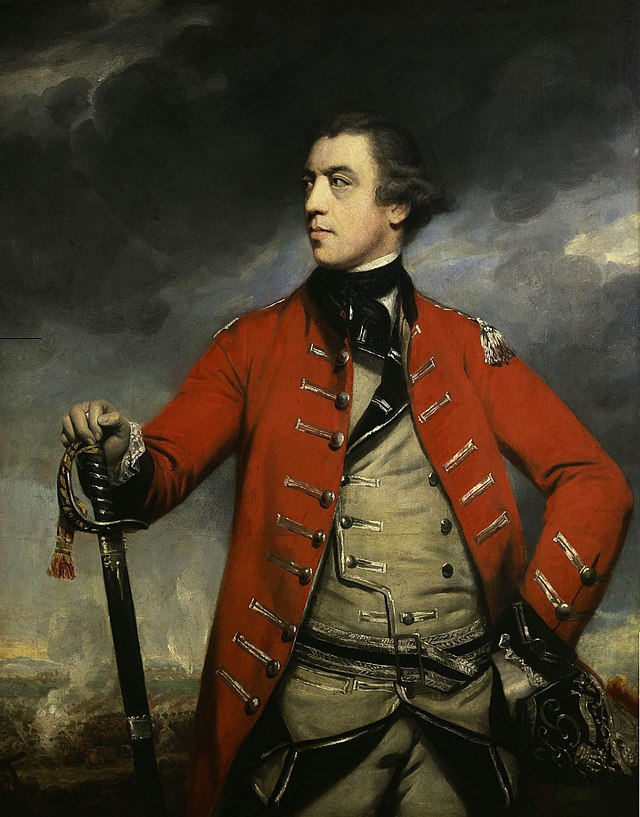
- February 24 – John Burgoyne, British army officer, playwright and politician (d. 1792)
- March 3 – Pietro Maria Gazzaniga, Italian theologian (d. 1799)
- March 6 – Johann Christian Brand, Austrian painter (d. 1795)
- March 7 – Louis-Jacques Goussier, French artist (d. 1799)
- March 15 – Gabriel Lenkiewicz, Belarusian Temporary Vicar General of the Society of Jesus (d. 1798)
- March 17 – William Wentworth, 2nd Earl of Strafford (1722–1791), England (d. 1791)
- March 18
- Ulrika Eleonora von Düben, Swedish lady in waiting (d. 1758)
- Heinrich XI, Prince Reuss of Greiz, German noble (d. 1800)
- March 19 – Edmund Nelson (clergyman), English priest (d. 1802)
- March 23
- Marguerite-Thérèse Lemoine Despins, Canadian mother superior (d. 1792)
- Jean-Baptiste Chappe d'Auteroche, French astronomer (d. 1769)
- April 8 – Jakob Friedrich Kleinknecht, German composer (d. 1794)

- April 11 – Christopher Smart, English poet (d. 1771)
- April 12 – Pietro Nardini, Italian composer and violinist (d. 1793)
- April 19 – Duke Clement Francis of Bavaria, German nobleman (d. 1770)
- April 22 (bapt.) – Joseph Warton, English poet and critic (d. 1800)
- April 25 – Mark Robinson (Royal Navy officer), Royal Navy admiral (d. 1799)
- April 26 – George Coventry, 6th Earl of Coventry, English noble and politician (d. 1809)
- April 29 – Francesco Carafa di Trajetto, Italian Catholic cardinal (d. 1818)
- May 2 – Gerhard Schøning, Norwegian historian (d. 1780)
- May 4
- David Leslie, 6th Earl of Leven, British noble (d. 1802)
- Robert McQueen, Lord Braxfield, Scottish advocate and judge (d. 1799)
- May 9 – Morgan Edwards, British historian and minister (d. 1795)
- May 11 – Petrus Camper, Dutch scientist (d. 1789)
- May 23 – Claudius Franciscus Gagnières des Granges, French martyr (d. 1792)
- May 25 – Anton Cebej, Slovenian artist (d. 1774)
- May 26 – Washington Shirley, 5th Earl Ferrers, British Royal Navy admiral (d. 1778)
- May 28 – Hugh Pigot (Royal Navy officer, born 1722), British Royal Navy admiral (d. 1792)
- May 29 – James FitzGerald, 1st Duke of Leinster (d. 1773)
- June 7 – George Paulet, 12th Marquess of Winchester, British politician (d. 1800)
- June 19 – George Gordon, 3rd Earl of Aberdeen (d. 1801)
- June 25 – St George Gore-St George, Irish politician (d. 1746)
- June 28 – Daniel Dulany the Younger, American politician (d. 1797)
- June 30 – Jiří Antonín Benda, Bohemian composer (d. 1795)
- July 1 – Vasily Dolgorukov-Krymsky, Russian general (d. 1782)
- July 11 – Prince George William of Hesse-Darmstadt, German prince (d. 1782)
- July 14 – Jean-Pierre du Teil, French general (d. 1794)
- July 16 – Joseph Wilton, English sculptor (d. 1803)
- July 21 – James Colebrooke, British baronet (d. 1761)
- July 23
- Antoine Petit, French physician (d. 1794)
- Anne-Catherine de Ligniville, Madame Helvétius, French salon holder (d. 1800)
- July 25 – Jakab Fellner, Hungarian architect (d. 1780)
- August 1 – Anne Marie Louise de La Tour d'Auvergne, French princess (d. 1739)
- August 5 – William Fortescue, 1st Earl of Clermont, Irish politician (d. 1806)
- August 9 – Prince Augustus William of Prussia (d. 1758)
- August 11 – Richard Brocklesby, British doctor (d. 1797)
- August 12 – Giuseppe Baldrighi, Italian painter (d. 1803)
- August 14 – Sir Thomas Dyke Acland, 7th Baronet (d. 1785)
- August 22
- Constantine Phipps, 1st Baron Mulgrave of Ireland (d. 1775)
- Josef Georg Hörl, Austrian politician (d. 1806)
- August 24 – John Gilbert Cooper, British poet and writer (d. 1769)
- September 1 – Karl Gotthelf von Hund, German baron (d. 1776)
- September 2 – Vigilius Eriksen, Danish artist (d. 1782)
- September 5 – Frederick Christian, Elector of Saxony (d. 1763)
- September 6 – Christian IV, Count Palatine of Zweibrücken, German noble (d. 1775)
- September 7 – Ernst Anton Nicolai, German chemist (d. 1802)
- September 13 – John Home, Scottish minister, soldier, author (d. 1808)
- September 16 – Gabriel Christie (British Army officer), British Army general (d. 1799)
- September 21 – Gisela Agnes of Anhalt-Köthen, Princess of Anhalt-Köthen by birth and by marriage Princess of Anhalt-Dessau (d. 1751)

- September 27 – Samuel Adams, Boston politician, leader in the American Revolution (d. 1803)
- October 2 – Leopold Widhalm, Austrian luthier (d. 1776)
- October 3 – Johann Heinrich Tischbein, German artist (d. 1789)
- October 5 – Richard Hotham, English property developer and politician (d. 1799)
- October 10 – Humphry Marshall, American botanist (d. 1801)
- October 20 – Joachim Edler von Popper, Austrian banker (d. 1795)
- October 24 – Dominic Schram, German theologian (d. 1797)
- October 31 – Princess Ulrike Friederike Wilhelmine of Hesse-Kassel, German princess (d. 1787)
- November 4 – Raphael Cohen, German rabbi (d. 1803)
- November 5 – William Byron, 5th Baron Byron, English dueller (d. 1798)
- November 11 – Nicolas Antoine Boulanger, French philosopher (d. 1759)
- November 18 – Ichijō Michika, Japanese court noble (d. 1769)
- November 19
- Leopold Auenbrugger, Austrian physician (d. 1809)
- Benjamin Chew, Chief Justice of colonial Pennsylvania (d. 1810)
- November 21 – Richard Bampfylde, British politician (d. 1776)
- November 22 – Marc Antoine René de Voyer, French noble (d. 1787)
- November 25 – Heinrich Johann Nepomuk von Crantz, Luxembourgian botanist (d. 1799)
- November 30 – Théodore Gardelle, Swiss painter, enameller (d. 1761)
- December 1
- Jean-Pierre de Bougainville, French writer (d. 1763)
- Anna Louisa Karsch, German poet (d. 1791)
- Dunbar Douglas, 4th Earl of Selkirk, Scottish peer (d. 1799)
- December 4 – Guillaume Piguel, French-born Apostolic Vicar of Cochin (d. 1771)
- December 12 – Charles Wallop, British politician (d. 1771)
- December 20 – Joseph O'Donnell Sr., Irish soldier (d. 1787)
- December 24 – Sampson Sammons, American army officer (d. 1796)
- December 28
- John Pitcairn, British Marine officer who was stationed in Boston (d. 1775)
- Eliza Lucas, American agronomist (d. 1793)
- December 30 – Charles Yorke, Lord Chancellor of Great Britain (d. 1770)
- date unknown – Flora MacDonald, Scottish heroine (d. 1790)
- probable – Hyder Ali, Indian general, Sultan of Mysore (d. 1782)
1723
- January 5 – Nicole-Reine Lepaute, French astronomer, mathematician (d. 1788)
- January 11 – Prithvi Narayan Shah, First Monarch of Nepal (d. 1775)
- January 12 – Samuel Langdon, American President of Harvard University (d. 1797)
- January 31 – Petronella Johanna de Timmerman, Dutch poet, scientist (d. 1786)
- February 15 – John Witherspoon, American signer of the Declaration of Independence (d. 1794)
- February 17 – Tobias Mayer, German astronomer (d. 1761)
- February 21 – Louis-Pierre Anquetil, French historian (d. 1808)
- February 23 – Richard Price, Welsh philosopher (d. 1791)
- March 22 – Charles Carroll, American lawyer, Continental Congressman (d. 1783)
- March 25 – Catharina Mulder, Dutch organist (d. 1798)
- March 31 – King Frederick V of Denmark (d. 1766)
- April 5 – Catherine Charlotte De la Gardie, Swedish countess (d. 1763)
- April 20 – Cornelius Harnett, American Continental Congressman (d. 1781)
- April 30 – Mathurin Jacques Brisson, French naturalist (d. 1806)
- June 3 – Giovanni Antonio Scopoli, Italian-born physician, naturalist (d. 1788)
- June 11 – Johann Georg Palitzsch, German astronomer (d. 1788)

- June 16 – (baptised) Adam Smith, Scottish economist, philosopher (d. 1790)
- June 20
- Adam Ferguson, Scottish philosopher, historian (d. 1816)
- Theophilus Lindsey, English theologian (d. 1808)
- July 1 – Pedro Rodríguez, Count of Campomanes, Spanish statesman, writer (d. 1802)
- July 10 – William Blackstone, English jurist (d. 1780)
- July 11 – Jean-François Marmontel, French historian, writer (d. 1799)
- July 16 – Sir Joshua Reynolds, English painter (d. 1792)
- September 11 – Johann Bernhard Basedow, German educational reformer (d. 1790)
- October 4 – Nikolaus Poda von Neuhaus, German entomologist (d. 1798)
- October 11 – Hedvig Strömfelt, Swedish psalm writer (d. 1766)
- November 8 – John Byron, English admiral (d. 1786)
- November 30 – William Livingston, American politician, journalist (d. 1790)
- December 22 – Carl Friedrich Abel, German composer (d. 1787)
- December 26 – Friedrich Melchior, baron von Grimm, German writer (d. 1807)
- Date unknown
- Carl Albert von Lespilliez, German draftsman, architect and printmaker (d. 1796)
- Eva Merthen, Finnish political activist (d. 1811)
1724
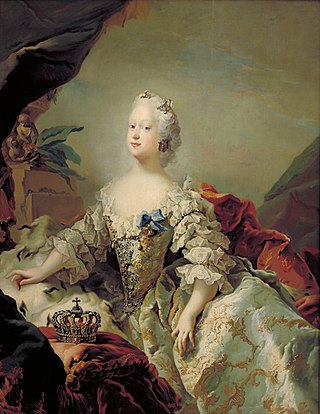
- January 12 – Frances Brooke, English writer (d. 1789)
- February 16 – Christopher Gadsden, American statesman (d. 1805)
- February 28 – George Townshend, 1st Marquess Townshend, British field marshal (d. 1807)
- February 29 – Eva Marie Veigel, Austrian-born English ballet dancer, known as La Violette (d. 1822)
- March 1 – Manuel do Cenáculo, Portuguese prelate and antiquarian (d. 1814)[84]
- March 6 – Henry Laurens, political leader during the American Revolutionary War, father of John Laurens (d. 1792)
- March 27 – Jane Colden, American botanist (d. 1766)
- April 12 – Lyman Hall, American signer of the Declaration of Independence (d. 1790)
- April 22 – Immanuel Kant, German philosopher (d. 1804)
- May 7 – Dagobert Sigmund von Wurmser, Alsatian-born Austrian general (d. 1797)
- May 19 – Augustus Hervey, 3rd Earl of Bristol, British admiral, politician (d. 1779)
- June 8 – John Smeaton, English civil engineer (d. 1792)
- June 15 – Countess Palatine Maria Franziska of Sulzbach, German aristocrat (d. 1794)
- July 2 – Friedrich Gottlieb Klopstock, German poet (d. 1803)
- July 10 – Eva Ekeblad, Swedish scientist (d. 1786)
- August 3 – Alvise Foscari, Venetian admiral (d. 1790)[85]
- August 23 – Abraham Yates, American Continental Congressman (d. 1796)
- August 25 – George Stubbs, English painter (d. 1806)
- August 27 – John Joachim Zubly, Swiss-born Continental Congressman (d. 1781)
- September 3 – Guy Carleton, 1st Baron Dorchester, British soldier and Governor of Quebec (d. 1808)
- December 12 – Samuel Hood, 1st Viscount Hood, British admiral (d. 1816)
- December 13 – Franz Aepinus, German scientist (d. 1802)
- December 18 – Louise of Great Britain, queen of Frederick V of Denmark (d. 1751)
- December 24 – Johann Conrad Ammann, Swiss physician, naturalist (d. 1811)
- December 25 – John Michell, English scientist and geologist (d. 1793)
- December 28 – Christoph Franz von Buseck, Prince-Bishop of Bamberg (d. 1805)
- December 30 – Louis-Jean-François Lagrenée, French painter (d. 1805)
- Date unknown
- Marie Anne Victoire Pigeon, French mathematician (d. 1767)
- James MacLaine, Irish highwayman (d. 1750)
1725


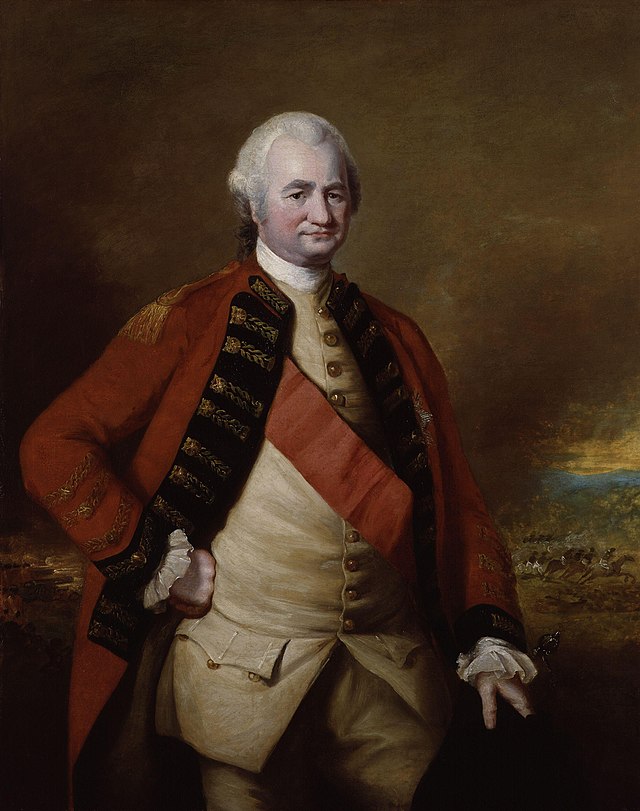
- January 25 – Antoine Court de Gébelin, French pastor (d. 1784)
- February 4 – Dru Drury, English entomologist (d. 1803)
- February 5
- James Otis, American lawyer, patriot (d. 1783)
- Anna Maria Rückerschöld, Swedish author (d. 1805)
- February 15 – Abraham Clark, American signer of the Declaration of Independence (d. 1794)
- February 25 – Karl Wilhelm Ramler, German poet (d. 1798)
- February 26 – Nicolas-Joseph Cugnot, French steam vehicle pioneer (d. 1804)
- March 6 – Henry Benedict Stuart, Italian-born cardinal, Jacobite claimant to the British throne (d. 1807)
- March 17 – Lachlan McIntosh, Scottish-born American military and political leader (d. 1806)
- March 20 – Abdul Hamid I, Ottoman Sultan (d. 1789)
- March 24
- Samuel Ashe, Governor of North Carolina (d. 1813)
- Thomas Cushing, American Continental Congressman (d. 1788)
- March 28 – Andrew Kippis, English non-conformist clergyman, biographer (d. 1795)[86]
- April 2 – Giacomo Casanova, Italian adventurer, writer (d. 1798)
- April 6 – Pasquale Paoli, Corsican patriot, military leader (d. 1807)
- April 23 – Gerard Majella, Italian Catholic lay brother and saint (d. 1755)
- April 25 – Augustus Keppel, 1st Viscount Keppel, British admiral (d. 1786)
- May 4 – Johan August Meijerfeldt the Younger, Swedish field marshal (d. 1800)
- May 12 – Louis Philippe I, Duke of Orléans, French soldier, writer (d. 1785)
- May 25 – Samuel Ward, American politician (d. 1776)
- June 29 – Maria Teresa Cybo-Malaspina, Duchess of Massa, Italian ruler (d. 1790)
- July 1 – Rhoda Delaval, English portrait painter (d. 1757)
- July 4
- Jean-Baptiste Luton Durival, French historian, diplomat and Encyclopédiste (d. 1810)
- Jean-Baptiste Donatien de Vimeur, comte de Rochambeau, French soldier (d. 1807)
- July 24 – John Newton, English cleric and hymnist (d. 1807)
- August 21 – Jean-Baptiste Greuze, French painter (d. 1805)
- August 29 – Charles Townshend, English politician (d. 1767)
- September 5 – Jean-Étienne Montucla, French mathematician (d. 1799)
- September 12 – Guillaume Le Gentil, French astronomer (d. 1792)
- September 16
- Nicolas Desmarest, French geologist (d. 1815)
- Anna Barbara Gignoux, German industrialist (d. 1796)
- September 24 – Arthur Guinness, Irish brewer (d. 1803)
- September 29 – Robert Clive, British general, statesman (d. 1774)
- October 12 – Étienne Louis Geoffroy, French pharmacist, entomologist (d. 1810)
- October 21 – Franz Moritz Graf von Lacy, Austrian field marshal (d. 1801)
- December 11 – George Mason, American founding father (d. 1792)
- December 18 – Johann Salomo Semler, German historian, Bible commentator (d. 1791)
- December 23 – Ahmad Shah Bahadur, 14th Mughal Emperor (d. 1775)
- date unknown – Magdalena Dávalos y Maldonado, Ecuadorian scholar, socialite (d. 1806)
1726
- January 14 – Jacques-Donatien Le Ray, French supporter of the American Revolution (d. 1803)
- January 17 – Hugh Mercer, brigadier general in the American Continental Army, and a close friend to George Washington (d. 1777)
- February 4 – Jean-Jacques Blaise d'Abbadie, Director-general of the Colony of Louisiana (d. 1765)
- February 7 – Margaret Fownes-Luttrell, British painter (d. 1766)
- March 8 – Richard Howe, British admiral (d. 1799)
- April 5 – Benjamin Harrison V, signer of the American Declaration of Independence (d. 1791)
- April 8 – Lewis Morris, American landowner and developer, signer of the United States Declaration of Independence (d. 1798)
- April 12 – Charles Burney, English music historian (d. 1814)
- April 20 – Joseph de Ferraris, Austrian cartographer of the Austrian Netherlands (d. 1814)
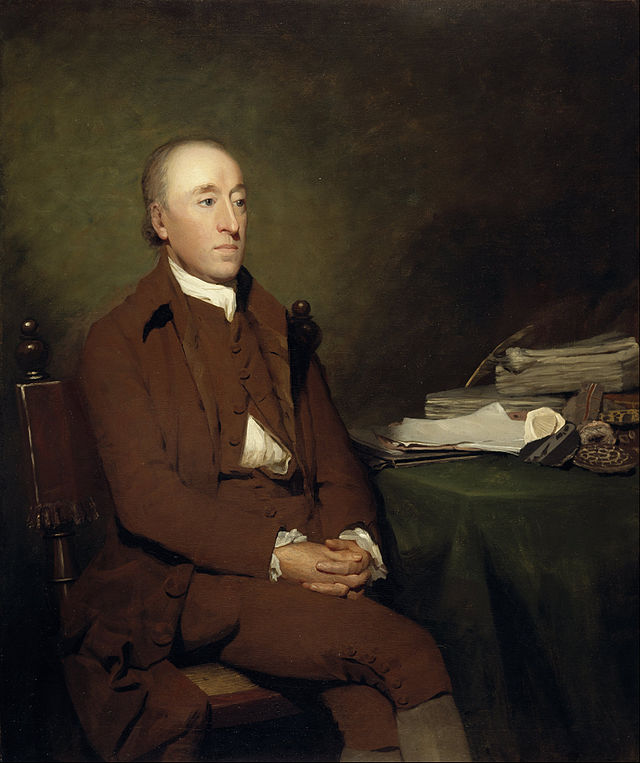
- June 3 O.S. – James Hutton, Scottish geologist (d. 1797)
- June 14 O.S. – Thomas Pennant, Welsh naturalist (d. 1798)
- June 20 – Louise Henriette of Bourbon, Duchess of Orléans, mother of Philippe Égalité (d. 1759)
- July 1 – Acharya Bhikshu, Jain saint (d. 1803)
- July 30 – William Jones (1726–1800), British clergyman, author (d. 1800)
- August 7 – James Bowdoin, American Revolutionary leader, politician (d. 1790)
- August 9 – Francesco Cetti, Italian Jesuit scientist (d. 1778)
- September 1 – François-André Danican Philidor, French composer, chess player (d. 1795)
- September 2 – John Howard (prison reformer), English philanthropist (d. 1790)
- September 26 – John H. D. Anderson, Scottish scientist (d. 1796)
- September 26 – Angelo Maria Bandini, Italian librarian (d. 1803)
- October 16 – Daniel Chodowiecki, Polish painter (d. 1801)
- December 4 – Lord Stirling, American brigadier-general during the American Revolutionary War (d. 1783)
- date unknown
- Lê Quý Đôn, Vietnamese philosopher, poet, encyclopedist, and government official (d. 1784)
- Cyprian Howe, American colonel in the American Revolutionary War (d. 1806)
- Katsukawa Shunshō, Japanese woodblock artist (d. 1792)
- Jedediah Strutt, English businessman (d. 1797)
- Lady Anne Monson, English botanist (d. 1776)
1727

- January 2 – James Wolfe, British general (d. 1759)
- January 25 – Aron Gustaf Silfversparre, Swedish baron (d. 1818)
- May 10 – Anne Robert Turgot, French statesman (d. 1781)
- May 14 – Thomas Gainsborough, English artist (d. 1788)
- July 26 – Horatio Gates, retired British soldier who served as an American general during the American Revolutionary War (d. 1806)
- August 14
- Henriette-Anne of France, daughter of King Louis XV of France (d. 1752)
- Princess Louise-Élisabeth of France, daughter of King Louis XV of France (d. 1759)
- August 22 – Johann Joseph Gassner, German priest (d. 1779)
- October 23 – Empress Xiaoyichun of China (d. 1775)
- November 26 – Artemas Ward, American major general (d. 1800)
- December 6 – Johann Gottfried Zinn, German anatomist, botanist (d. 1757)
- December 27 – Arthur Murphy, Irish writer (d. 1805)
1728
- January 9 – Thomas Warton, English poet (d. 1790)
- February 3 – Charles Rainsford, British general (d. 1809)
- February 21 – Emperor Peter III of Russia, husband of Catherine the Great (d. 1762)
- February 25 – John Wood, the Younger, English architect (d. 1782)
- March 28 – Anton Raphael Mengs, German-Bohemian painter (d. 1779)
- April 16 – Joseph Black, Scottish physicist and chemist (d. 1799)
- June 22 – Anna Jabłonowska, Polish magnate and politician (d. 1800)
- August 26 – Johann Heinrich Lambert, Swiss mathematician, physicist and astronomer (d. 1777)
- August 28 – John Stark, American Revolutionary War general (d. 1822)
- September 3 – Matthew Boulton, English manufacturer, lifelong key partner of James Watt (d. 1809)
- September 14 – Mercy Otis Warren, American playwright (d. 1814)
- October 5 – Chevalier d'Éon, French diplomat, spy, soldier and transvestite (d. 1810)
- October 7 – Caesar Rodney, American lawyer and signer of the Declaration of Independence (d. 1784)

- October 27 – James Cook, British naval commander and explorer (d. 1779)
- November 10 – Oliver Goldsmith, Irish writer (d. 1774)
- December 28 – Justus Claproth, German jurist, inventor of the de-inking process of recycled paper (d. 1805)
- date unknown
- Josefa Ordóñez, Spanish–Mexican actress, courtesan (est. year of birth)
- James Armstrong, American politician and Major of the Continental Army (d. 1800) (est. year of birth)
- Juan Albano Pereira Márquez godfather and tutor of Bernardo O'Higgins.
1729
- January 12
- Lazzaro Spallanzani, Italian biologist (d. 1799)
- Edmund Burke, Irish statesman and philosopher (d. 1797)

- January 22 – Gotthold Ephraim Lessing, German author and philosopher (d. 1781)

- February 26 – Anders Chydenius, Finnish economist, liberal politician and Lutheran priest (d. 1803)[87]

- May 2 – Catherine the Great, born Sophie of Anhalt-Zerbst, empress regnant of Russia (d. 1796)[88]
- July 4 – George Leonard, American lawyer, jurist and politician (d. 1819)
- August 10 – William Howe, 5th Viscount Howe, British general (d. 1814)
- September 6 – Moses Mendelssohn, German-Jewish philosopher (d. 1786)
- September 15 – Mikiel'Ang Grima, Maltese surgeon (d. 1798)
- October 6 – Sarah Crosby, English Methodist preacher, the first female (d. 1804)
- November 17 – Maria Antonia Ferdinanda of Spain, Queen consort of Sardinia (d. 1785)
- November 21 – Josiah Bartlett, second signer of the United States Declaration of Independence (d. 1795)
- November 12 – Louis Antoine de Bougainville, French navigator and military commander (d. 1811)
- November 22 – Helena Dorothea von Schönberg, German industrialist (d. 1799)
- November 24 – Alexander Suvorov, Russian general (d. 1800)
- date unknown
- David Barclay of Youngsbury, English merchant, businessman and banker (d. 1809)
- Samuel Barrington, British admiral (d. 1800)
- Mary Woffington, Irish socialite (d. 1811)[89]
Remove ads
Deaths
1720
- January – Francis Daniel Pastorius, founder of Germantown, Pennsylvania (b. 1651)
- January 4 – Harry Mordaunt, British politician (b. 1663)
- January 10 – Ramon Perellos, Spanish 64th Grandmaster of the Knights Hospitaller (b. 1637)
- January 12 – William Ashhurst, Lord Mayor of London (1693–1694) (b. 1647)
- January 19 – Eleonor Magdalene of Neuburg, Holy Roman Empress (b. 1655)
- January 20
- Giovanni Maria Lancisi, Italian physician (b. 1654)
- Angelo Paoli, Italian beatified (b. 1642)
- January 31 – Thomas Grey, 2nd Earl of Stamford, English privy councilor (b. c. 1645)
- February 4 – Robert Wroth, British politician (b. 1660)
- February 27 – Samuel Parris, English-born Puritan minister (b. 1653)
- March 6 – Pieter van Bloemen, Flemish painter (b. 1657)
- March 13 – William Sewel, Dutch historian (b. 1653)

- April 2 – Joseph Dudley, colonial Governor of Massachusetts (b. 1647)
- April 12 – Balaji Vishwanath, Peshwa of the Maratha Empire (b. 1662)
- April 20 – George Gordon, 1st Earl of Aberdeen, Lord Chancellor of Scotland (b. 1637)
- April 21 – Antoine Hamilton, French writer (b. 1646)
- June 19 – Robert Knox, English sea captain (b. 1641)
- June 27 – Guillaume Amfrye de Chaulieu, French poet (b. 1639)
- July 6 – Isaac Milles, English minister (b. 1638)
- July 7 – Juan Romero de Figueroa, Spanish priest (b. 1646)
- July 12 – King Sukjong of Joseon (b. 1661)
- August 3
- Anthonie Heinsius, Dutch politician (b. 1641)
- Anne Finch, Countess of Winchilsea, English poet (b. 1661)
- August 9 – Simon Ockley, English orientalist (b. 1678)
- August 17 – Anne Lefèvre, French scholar (b. 1654)
- August 21 – John Leake, English Royal Navy admiral (b. 1656)
- August 23 – Sybilla Masters, American inventor (b. c. 1676)
- August 26 – Johann Christoph Volkamer, German botanist (b. 1644)
- September 3 – Henri de Massue, Marquis de Ruvigny, 1st Viscount Galway, French soldier and diplomat (b. 1648)
- September 9 – Philippe de Courcillon, French officer and author (b. 1638)
- September 20 – Pierre de La Broue, American bishop (b. 1644)
- October 10 – Antoine Coysevox, French sculptor (b. 1640)
- November 12 – Peder Tordenskjold, Norwegian naval hero (b. 1690)

- November 18 – John Rackham, English pirate.
- November 27
- Willem van Outhoorn, Dutch colonial governor (b. 1635)
- Diego de Salinas, Governor of Gibraltar (b. 1649)
- December 29 – Maria Margarethe Kirch, German astronomer (b. 1670)
- date unknown
- Shahzada Assadullah Khan Abdali, Persian Governor of Herat (b. 1687)
- Demoiselle Conradi, German opera singer
1721
- January 25 – Robert Challe, French colonialist (b. 1659)
- January 26 – Pierre Daniel Huet, French churchman and scholar (b. 1630)
- February 5 – Abraham Hill, British merchant (b. 1633)
- February 5 –James Stanhope, 1st Earl Stanhope, English chief minister (b. 1673)
- February 16 – James Craggs the Younger, English politician (b. 1686)
- February 24 – John Sheffield, 1st Duke of Buckingham and Normanby, English statesman and poet (b. 1648)
- March 16 – James Craggs the Elder, English politician (b. 1657)
- March 19 – Pope Clement XI (b. 1649)
- March 29 – Charles Vane, English pirate, executed (b. 1680)
- April – Mary Read, English-born pirate
- April 14 – Michel Chamillart, French statesman (b. 1652)
- April 27 – Eva von Buttlar, German mystic sectarian (b. 1670)
- May 7 – Zinat-un-Nissa, princess of the Mughal Empire (b. 1643)
- May 8 – Marc-René de Voyer de Paulmy d'Argenson (1652–1721), French politician (b. 1652)
- May 10 – Christian William I, Prince of Schwarzburg-Sondershausen (1666–1720) (b. 1647)
- June 3 – Joaquín Canaves, Spanish Catholic bishop (b. 1640)
- June 18 – Philip, Landgrave of Hesse-Philippsthal, son of William VI (b. 1655)
- July 8 – Elihu Yale, American benefactor of Yale University (b. 1649)
- July 18 – Jean-Antoine Watteau, French painter (b. 1684)
- July 19 – Sir Jonathan Trelawny, 3rd Baronet, British bishop (b. 1650)
- July 26 – Godefroy Maurice de La Tour d'Auvergne, Duke of Bouillon, French noble (b. 1636)
- August 3 – Grinling Gibbons, Dutch-born woodcarver (b. 1648)
- August 13 – Jacques Lelong, French bibliographer (b. 1665)
- September 3 – Sir William Glynne, 2nd Baronet, English politician (b. 1663)
- September 6 – Georg Wolfgang Wedel, German physician, surgeon, botanist, chemist and philosopher (b. 1645)
- September 8
- Michael Brokoff, Czech sculptor (b. 1686)
- Henri Arnaud, French Waldensian pastor, leader (b. 1641)
- September 9 – David Martin, French theologian (b. 1639)
- September 11 – Rudolf Jakob Camerarius, German botanist and physician (b. 1665)

- September 17 – Marguerite Louise d'Orléans, French princess (b. 1645)
- September 18 – Matthew Prior, British poet and diplomat (b. 1664)
- September 20 – Thomas Doggett, Irish actor (b. c. 1670)
- September 24 – Pacificus of San Severino, Italian saint (b. 1653)
- October 4 – Abraham Alewijn, Dutch playwright (b. 1664)
- October 11
- Edward Colston, English merchant, philanthropist (b. 1636)
- Anton Florian, Prince of Liechtenstein (b. 1656)
- October 23 – Samuel Frisching, Bernese soldier and politician (b. 1638)
- October 24 – Anthony Morris (I), American politician (b. 1654)
- December 13 – Alexander Selkirk, Scottish sailor (original "Robinson Crusoe") (b. 1676)

- December 17 – Richard Lumley, 1st Earl of Scarbrough, English statesman (b. 1650)
- December 25 – António Luís de Sousa, 2nd Marquis of Minas, Portuguese general, governor-general of Brazil (b. 1644)
- date unknown – Sultan Abdullah Khan Abdali, Persian Governor, Shah of Herat (b. 1670)
1722
- January 7 – Antoine Coypel, French painter (b. 1661)
- January 21 – Charles Paulet, 2nd Duke of Bolton, English supporter of William III of England (b. 1661)
- January 23 – Henri de Boulainvilliers, French nobleman (b. 1658)
- January 29 – Carl Gustav Rehnskiöld, Swedish military leader (b. 1651)
- February 5 – Éléonore Desmier d'Olbreuse, Duchess of Braunschweig-Lüneburg (b. 1639)
- February 10 – Bartholomew Roberts, Welsh pirate (b. 1682)
- March 11 – John Toland, Irish philosopher (b. 1670)
- March 31 – Eberhard von Danckelmann, Prime Minister of Brandenburg-Prussia (b. 1643)
- April 13 – Charles Leslie, Irish Anglican theologian (b. 1650)
- April 21 – Robert Beverley, Jr., historian of Colonial Virginia (b. 1673)
- May 20 – Sébastien Vaillant, French botanist (b. 1669)
- June 5 – Johann Kuhnau, German composer (b. 1660)
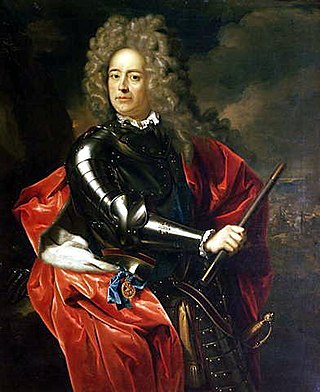
- June 16
- John Churchill, 1st Duke of Marlborough, English general (b. 1650)
- Marc'Antonio Zondadari, Italian-born 65th Grandmaster of the Knights Hospitaller (b. 1658)
- July 16 – Maria Angela Caterina d'Este, Italian princess (b. 1656)
- August 20 – John Coney (silversmith), early American silversmith/goldsmith (b. 1655)
- September 18 – André Dacier, French classical scholar (b. 1651)
- September 20 – John Lauder, Lord Fountainhall, Scottish jurist (b. 1646)
- October 8 – Gerard Callenburgh, Dutch admiral (b. 1642)
- November 12 – Adriaen van der Werff, Dutch painter (b. 1659)
- November 20 – Johann Adam Reincken, German organist (b. 1643)
- December 5 – Marie Anne de La Trémoille, princesse des Ursins, politically active Spanish court official (b. 1642)
- December 8 – Elizabeth Charlotte, Princess Palatine, wife to Philippe I, Duke of Orléans (b. 1652)

- December 20 – Kangxi Emperor of China (b. 1654)
- December 23 – Pierre Varignon, French mathematician (b. 1654)
1723
- January 14 – Charles Henri, Prince of Commercy (b. 1649)
- January 23 – William Phippard, English politician (b. 1649)
- February 23 – Anne Henriette of Bavaria, Duchess of Guise (b. 1648)
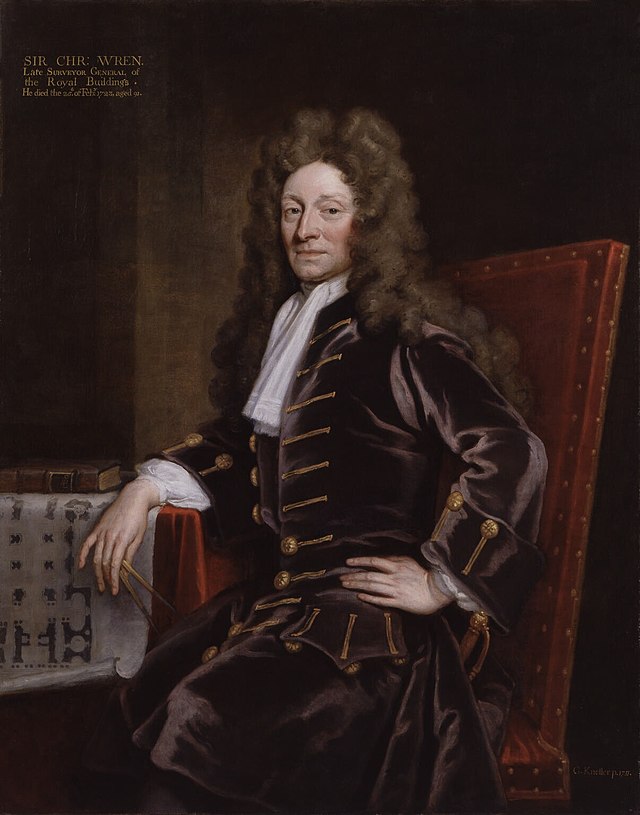
- February 25 – Sir Christopher Wren, English architect, astronomer and mathematician (b. 1632)
- February 26 – Thomas d'Urfey, English writer (b. 1653)
- March 13 – René Auguste Constantin de Renneville, French writer (b. 1650)
- March 15 – Johann Christian Günther, German poet (b. 1695)
- March 30 – Filippo Bonanni, Italian Jesuit scholar (b. 1638)
- March 31 – Edward Hyde, 3rd Earl of Clarendon, British Governor of New York and New Jersey (b. 1661)
- April 5 – Johann Bernhard Fischer von Erlach, Austrian architect (b. 1656)
- April 11 – John Robinson, English diplomat (b. 1650)
- May 2 – Christopher of Baden-Durlach, German prince (b. 1684)
- May 11 – Jean Galbert de Campistron, French dramatist (b. 1656)
- May 12 – Johannes Voorhout, Dutch painter (b. 1647)
- May 29 – Jean de La Chapelle, French writer and dramatist (b. 1651)
- June 4 – Léopold Clément, Hereditary Prince of Lorraine, French prince (b. 1707)
- June 8 – Isaac Chayyim Cantarini, Italian rabbi (b. 1644)
- June 14 – Richard Newport, 2nd Earl of Bradford, English politician (b. 1644)
- July 14 – Claude Fleury, French historian (b. 1640)
- July 26 – Robert Bertie, 1st Duke of Ancaster and Kesteven, English statesman (b. 1660)
- July 28 – Mariana Alcoforado, Portuguese nun (b. 1640)
- August 4 – William Fleetwood, Anglican bishop (b. 1656)
- August 10 – Guillaume Dubois, French cardinal, statesman (b. 1656)
- August 14 – Edward Northey (barrister), British barrister and politician (b. 1652)
- August 17 – Joseph Bingham, English scholar (b. 1668)
- August 21 – Dimitrie Cantemir, Moldavian linguist and scholar (b. 1673)
- August 23 – Increase Mather, American Puritan minister (b. 1639)

- August 26 – Antonie van Leeuwenhoek, Dutch scientist (b. 1632)
- September 19 – Robert Sutton, 2nd Baron Lexinton, English diplomat (b. 1662)
- October 1 – Frédéric Maurice Casimir de La Tour d'Auvergne, French prince (b. 1702)
- October 10 – William Cowper, 1st Earl Cowper, Lord Chancellor of England (b. c. 1665)
- October 13 – Praskovia Saltykova, Russian tsarina (b. 1664)
- October 19 – Godfrey Kneller, German-born artist (b. 1646)
- October 28 – Christopher Vane, 1st Baron Barnard, English politician and peer (b. 1653)
- October 31 – Cosimo III de' Medici, Grand Duke of Tuscany (b. 1642)
- November 19 – Antoine Nompar de Caumont, French courtier and statesman (b. 1632)
- December 1 – Susanna Centlivre, English dramatist, actress (b. 1669)
- December 2 – Philippe II, Duke of Orléans, regent of France (b. 1674)
- December 7 – Jan Santini Aichel, Czech architect (b. 1677)
- December 20 – Augustus Quirinus Rivinus, German physician, botanist (b. 1652)
1724



- January 20 – William Lowndes, English politician (b. 1652)
- February 19 – Pieter Schuyler, British colonial military leader, acting governor of New York (b. 1657)
- March 4 – Princess Eleonore Juliane of Brandenburg-Ansbach, duchess by marriage of Württemberg-Winnental (b. 1663)
- March 7 – Pope Innocent XIII (b. 1655)[90]
- March 10 – Urban Hjärne, Swedish chemist (b. 1641)
- March 15 – Regent Marie Jeanne Baptiste of Savoy-Nemours (b. 1644)
- March 19 – Lewis Watson, 1st Earl of Rockingham, English politician (b. 1655)
- March 31 – Sophia of Saxe-Weissenfels, Princess of Anhalt-Zerbst (b. 1654)
- April 28 – Streynsham Master, English colonial administrator (b. 1640)
- May 3 – John Leverett the Younger, American President of Harvard (b. 1662)
- May 21 – Robert Harley, 1st Earl of Oxford and Earl Mortimer, English statesman (b. 1661)
- June – Magdelaine Chapelain, French fortune teller and poisoner (b. 1651)
- June 11 – Ludovico Sabbatini, Italian Roman Catholic priest and saint (b. 1650)
- June 15 – Henry Sacheverell, English churchman and politician (b. 1674)
- June 24 – Johann Theile, German composer and organist (b. 1646)
- July 1 – Johann Homann, German cartographer (b. 1664)
- July 2 – Thomas Maule, prominent Quaker in colonial Salem (b. 1645)
- July 13 – Sir Richard Levinge, 1st Baronet, British politician (b. 1656)
- July 31 – Claude de Ramezay, Canadian politician (b. 1659)
- August 2 – Patrick Hume, 1st Earl of Marchmont, Scottish statesman (b. 1641)
- August 6 – Samson Wertheimer, European rabbi (b. 1658)
- August 21 – Noël Alexandre, French theologian and ecclesiastical historian (b. 1639)
- August 24 – Andreas Kneller, German organist and composer (b. 1649)
- August 31 – King Louis I of Spain (b. 1707)[24]
- October 2 – François-Timoléon de Choisy, French writer (b. 1644)
- October 18 – Jean de Hautefeuille, French cleric, scientist (b. 1647)
- October 29 – William Wollaston, English philosophical writer (b. 1659)[91]
- October 30 – Marie of Lorraine, French princess (b. 1674)
- November 7 – John Kyrle, British philanthropist (b. 1637)
- November 14 – John Murray, 1st Duke of Atholl (b. 1660)
- November 16 – Jack Sheppard, British criminal (executed) (b. 1702)[29]
- November 18 – Bartolomeu de Gusmão, Portuguese naturalist (b. 1685)
- November 24 – Ernst Ludwig I, Duke of Saxe-Meiningen (b. 1672)
- November 28 – Robert Marsham, 1st Baron Romney, British politician (b. 1685)
- December 27 – Thomas Guy, English philanthropist (b. 1644)[92]
1725


- January 6 – Chikamatsu Monzaemon, Japanese dramatist (b. 1653)
- January 26 – Sulkhan-Saba Orbeliani, Georgian prince (b. 1658)
- January 29 – Nuno Álvares Pereira de Melo, 1st Duke of Cadaval, Portuguese nobleman and statesman (b. 1638)
- February 7 – Johann Philipp Krieger, German Baroque composer (b. 1649)
- February 8 – Emperor Peter I of Russia (b. 1672)
- March 2 – José Benito de Churriguera, Spanish architect, sculptor (b. 1665)
- March 10 – John Conyers, English politician (b. 1650)
- March 30 – René de Froulay de Tessé, French Marshal and diplomat (b. 1648)
- April 8 – John Wise, English clergyman (b. 1652)
- April 12 – Giovanni Battista Foggini, Italian artist (b. 1652)
- April 25 – Paul de Rapin, French historian (b. 1661)
- May 22 – Robert Molesworth, 1st Viscount Molesworth, Irish politician (b. 1656)
- May 24 – Jonathan Wild, English criminal (b. 1682)
- May 31 – Erik Carlsson Sjöblad, Swedish governor, admiral, and baron (b. 1647)
- June 29
- Arai Hakuseki, Japanese poet, politician, and writer (b. 1657)
- Juan Manuel Fernández Pacheco, 8th Duke of Escalona, Spanish aristocrat (b. 1650)
- July 11 – Salomon Franck, German lawyer, scientist, poet (b. 1659)
- July 17 – Thomas King, English and British soldier, MP for Queenborough, lieutenant-governor of Sheerness (b. before 1660?)[93]
- September 16 – Antoine V de Gramont, French military leader (b. 1672)
- October 10
- Francesco del Giudice, Italian Catholic cardinal (b. 1647)
- Philippe de Rigaud Vaudreuil, Governor-General of New France (b. c. 1643)
- October 11 – Hans Herr, Swiss-born Mennonite bishop (b. 1639)
- October 16 – Ralph Thoresby, British historian (b. 1658)
- October 24 – Alessandro Scarlatti, Italian composer (b. 1660)
- November 20 – William, Landgrave of Hesse-Rotenburg (from 1683) (b. 1648)
- December 7 – Florent Carton Dancourt, French dramatist, actor (b. 1661)
- December 10 – Nicolaas Hartsoeker, Dutch mathematician and physicist (b. 1656)
- date unknown
- Giuseppe Mazzuoli, Italian sculptor (b. 1644)
- José Mora, Spanish sculptor (b. 1638)
- Nguyễn Phúc Chu, Vietnamese ruler (b. 1675)
- Petar Blagojević, Serbian peasant, alleged vampire
- Alicia D'Anvers, English poet (b. 1688)
- probable
- Leendert Hasenbosch, Dutch castaway on Ascension Island (b. c. 1695)
- Keaweʻīkekahialiʻiokamoku, ruler of Hawaii (b. c. 1660)
1726
- January 2 – Domenico Zipoli, Tuscan-born composer and Jesuit missionary (b. 1688)
- January 12 – Hercule-Louis Turinetti, marquis of Prié (b. 1658)
- January 19
- Franz Beer, Austrian architect (b. 1659)
- Giovanni Battista Tolomei, Italian Jesuit priest, theologian and cardinal (b. 1653)
- January 25 – Guillaume Delisle, French cartographer (b. 1675)
- February 18 – Jacques Carrey, French painter (b. 1649)
- February 26 – Maximilian II Emanuel, Elector of Bavaria (b. 1662)
- March 5 – Evelyn Pierrepont, 1st Duke of Kingston-upon-Hull, English politician (b. c. 1665)
- March 6 – Henrietta Catharina, Baroness von Gersdorff, German noblewoman; poet (b. 1648)
- March 13 – Alexander Pendarves, British politician (b. 1662)

- March 14 – Chhatrapati Shivaji Raje Bhonsale 2nd, 5th Maratha Emperor (b. 1696)
- March 26 – John Vanbrugh, English architect and dramatist (b. 1664)
- April 26 – Jeremy Collier, English theatre critic, non-juror bishop and theologian (b. 1650)
- April 28 – Thomas Pitt, British Governor of Madras (b. 1653)[94]
- May 10 – Charles Beauclerk, 1st Duke of St Albans, English soldier (b. 1670)
- June 18 – Michel Richard Delalande, French organist, composer (b. 1657)
- July 3 – Galeazzo Marescotti, Italian Catholic cardinal (b. 1627)
- July 8 – John Ker, Scottish spy (b. 1673)
- July 22 – Hugh Drysdale, British Colonial Governor of Virginia
- July 31 – Nicolaus II Bernoulli, Swiss mathematician (b. 1695)
- September 22 – Aixinjueluo Yuntang, born Aixinjueluo Yintang, Qing prince (b. 1683)
- October 29 – Jean Boivin the Younger, French writer (b. 1663)
- November 22 – Anton Domenico Gabbiani, Italian painter (b. 1652)
- November 23 – Sophia Dorothea of Celle, queen consort of George I of Great Britain (b. 1666)
- December 2 – Samuel Penhallow, American colonist, historian (b. 1665)
1727
- January 17 – Johann Christoph Wichmannshausen, German philosopher (b. 1663)
- January 24 – Magdalena Stenbock, Swedish salon hostess (b. 1649)
- February 6 – Charles Boit, Swedish enameller, miniature painter (b. 1662)
- February 10 – Procopio Cutò, French entrepreneur (b. 1651)
- February 13 – William Wotton, English scholar (b. 1666)
- February 22 – Francesco Gasparini, Italian composer (b. 1661)
- February 23 – Lionel Tollemache, 3rd Earl of Dysart, British politician and nobleman (b. 1649)

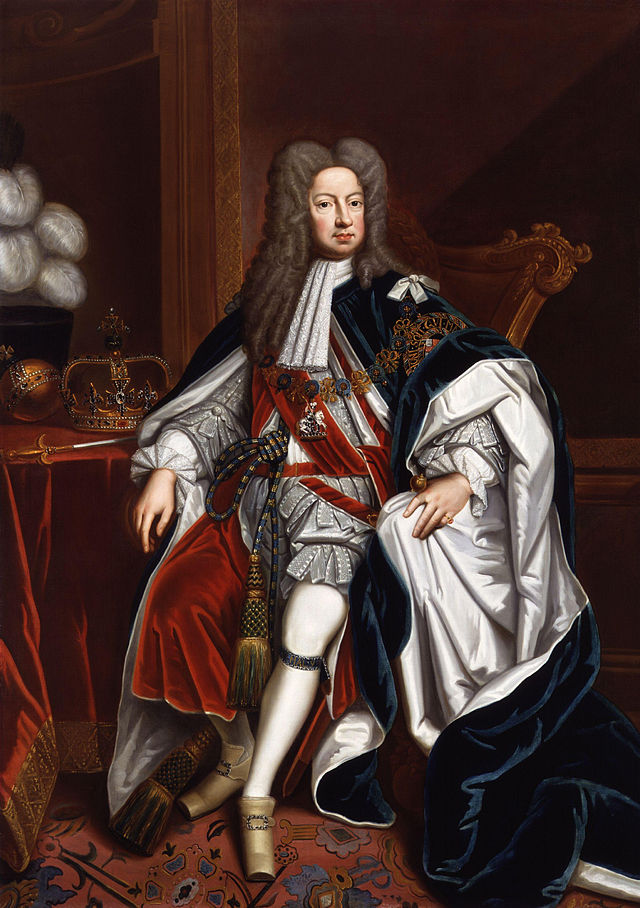
- March 31 [O.S. March 20] – Sir Isaac Newton, English scientist (b. 1643)
- April 15 – George Compton, 4th Earl of Northampton (b. 1664)
- May 17 – Empress Catherine I of Russia (b. 1684)
- June 8 – August Hermann Francke, German Protestant minister (b. 1663)
- June 11
- Richard Hill of Hawkstone, English statesman (b. 1655)
- King George I of Great Britain (b. 1660)
- July 9 – Veronica Giuliani, Italian nun, mystic (b. 1660)
- July 23 – Simon Harcourt, 1st Viscount Harcourt, Lord Chancellor of Great Britain (b. c. 1660)
- August 4 – Victor-Maurice, comte de Broglie, French general (b. 1647)
- August 14 – William Croft, English composer (b. 1678)
- August 17 – Louis, Duke of Rohan, French noble (b. 1652)
- August 27 – Aert de Gelder, Dutch painter (b. 1645)
- September 6 – George Hooper, Bishop of St Asaph
Bishop of Bath and Wells (b. 1640) - September 7 – Glückel of Hameln, German businesswoman and diarist (b. 1647)
- September 8 – Giuseppe Bartolomeo Chiari, Italian painter (b. 1654)
- September 25
- Jakob Abbadie, Swiss Protestant preacher (b. c. 1654)
- Sarah Kemble Knight, colonial Massachusetts diarist (b. 1666)
- October 2 – Johann Conrad Brunner, Swiss anatomist (b. 1653)
- October 10
- Charles III, Prince of Guéméné, French nobleman (b. 1655)
- Robert Rochfort, Irish politician (b. 1652)
- November 10 – Alphonse de Tonty, French explorer and American settler (b. 1659)
- December 22 – Louis Phélypeaux, comte de Pontchartrain (b. 1643)
- December 26
- Jean-Baptiste de La Croix de Chevrières de Saint-Vallier, Catholic bishop of Quebec (b. 1653)
- Baltasar de Zúñiga, 1st Duke of Arión, viceroy of New Spain (b. 1658)
- date unknown
- Alessio Erardi, Maltese painter (b. 1669)[95]
- Pietro Erardi, Maltese chaplain and painter (b. 1644)[96]
- Jesse of Kartli, King of Georgia (b. 1680 or 1681)
- Basil Matthew II, Syriac Orthodox Maphrian of the East[97]
1728
- January 26 – Paolo de Matteis, Italian painter (b. 1662)
- February 12 – Agostino Steffani, Italian diplomat, composer (b. 1654)
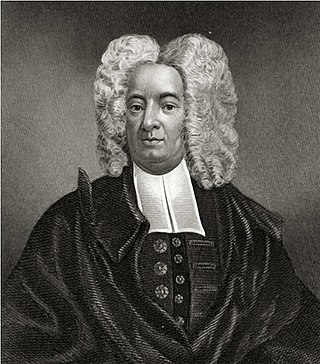
- February 13 – Cotton Mather, New England Puritan minister (b. 1663)
- February 16
- Maria Aurora von Königsmarck, Swedish noblewoman of Brandenburg extraction (b. 1662)
- Heinrich of Saxe-Weissenfels, Count of Barby, German prince (b. 1657)
- February 25 – Alexander zu Dohna-Schlobitten, German general (b. 1661)
- March 4 – Grand Duchess Anna Petrovna of Russia, eldest daughter of Peter the Great (b. 1708)
- March 7 – Frederick Louis, Duke of Schleswig-Holstein-Sonderburg-Beck (b. 1653)
- March 18 – George Stanhope, Dean of Canterbury (b. 1660)
- March 20 – Camille d'Hostun, duc de Tallard, Marshal of France (b. 1652)
- May 26 – William Cheyne, 2nd Viscount Newhaven, English politician (b. 1657)
- April 3 – James Anderson, Scottish historian (b. 1662)
- April 10 – Nicodemus Tessin the Younger, Swedish architect (b. 1654)
- April 21 – Filippo Antonio Gualterio, Italian Catholic cardinal (b. 1660)
- April 23 – Tomás de Torrejón y Velasco, Spanish composer, musician and organist (b. 1644)
- May 7 – Rose Venerini, Italian saint, educational pioneer (b. 1656)
- May 14 – Louise Marie d'Orléans, Mademoiselle, French princess (b. 1726)
- May 23 – William Delaune, English academic administrator and clergyman (b. 1659)
- June 6 – David Leslie, 3rd Earl of Leven, British politician (b. 1660)
- June 17 – Matthieu Petit-Didier, French Benedictine theologian (b. 1659)
- June 30 – Otto Friedrich von der Groeben, Prussian traveller, soldier and author (b. 1657)
- July 21 – Nathaniel Gould, English politician (b. 1661)
- August 3 – Abraham de Peyster, United States politician (b. 1657)
- August 7 – Jacques L'enfant, French Protestant pastor (b. 1661)
- August 11 – William Sherard, English botanist (b. 1659)
- August 15 – Marin Marais, French viol player and composer (b. 1656)
- August 26
- William Ernest, Duke of Saxe-Weimar (b. 1662)
- Anne Marie d'Orléans, Queen consort of Sicily and Sardinia (b. 1669)
- September 23 – Christian Thomasius, German jurist (b. 1655)
- September 24 – Frederik Krag, Danish nobleman and senior civil servant (b. 1655)
- October 1 – Robert Livingston the Elder, New York colonial official (b. 1654)
- October 15 – Bernard de la Monnoye, French lawyer (b. 1641)
- November 10 – Fyodor Apraksin, Russian admiral (b. 1661)
- November 15 – Élie Benoist, French Protestant minister (b. 1640)
- November 19 – Leopold, Prince of Anhalt-Köthen, German prince (b. 1694)
- November 22
- Grand Duchess Natalya Alexeyevna of Russia (1714–1728), Russian grand duchess (b. 1714)
- Joseph Boyse, Presbyterian minister (b. 1660)
- December 8 – Camillo Rusconi, Italian artist (b. 1658)
- December 28 – Thomas Johnson, English politician (b. 1664)
- date unknown
- Giovanni Barbara, Maltese architect and military engineer (b. 1642)
- Dionysius Andreas Freher, German mystic (b. 1649)
- Stokkseyrar-Dísa, Icelandic Galdrmistress (b. 1668)
- Serfoji I, third Raja of the Bhonsle Dynasty (b. 1675)
- Maria Guyomar de Pinha, Siamese cook (b. 1664)
1729
- January 11 – Thomas of Cori, Italian Friar Minor and preacher (b. 1655)
- January 19
- William Congreve, English playwright (b. 1670)[98]
- Lorenzo Cozza, Italian Catholic cardinal (b. 1654)
- January 30 – Lothar Franz von Schönborn, Archbishop of Mainz (b. 1655)
- January 31 – Jacob Roggeveen, Dutch explorer (b. 1659)
- February 11 – Solomon Stoddard, pastor of the Congregationalist Church in Northampton, Massachusetts (b. 1643)
- February 17 – John Ernest IV, Duke of Saxe-Coburg-Saalfeld (b. 1658)
- March 2 – Francesco Bianchini, Italian philosopher, scientist (b. 1662)
- March 6 – Sir William Lowther, 1st Baronet, of Swillington, British politician (b. 1663)
- March 15 – Elisabeth Eleonore of Brunswick-Wolfenbüttel, Duchess consort of Saxe-Meiningen (b. 1658)
- March 18 – Michael Bernhard Valentini, German naturalist (b. 1657)
- March 21
- John Law, Scottish-born economist (b. 1671)
- Elżbieta Sieniawska, politically influential Polish magnate (b. 1669)
- March 26 – Simon de la Loubère, French diplomat (b. 1642)
- April 12 – Louis-Guillaume Pécour, French dancer and choreographer (b. 1653)
- May 4 – Louis-Antoine, Cardinal de Noailles, French bishop (b. 1651)

- May 17 – Samuel Clarke, English philosopher (b. 1675)[99]
- June 4 – Sir John Delaval, 3rd Baronet, English politician (b. 1654)
- June 12 – John Williams, American clergy (b. 1664)
- June 27 – Élisabeth Jacquet de La Guerre, French harpsichordist and composer (b. 1665)
- July 16 – Johann David Heinichen, German composer (b. 1683)
- July 30 – Thomas Tufton, 6th Earl of Thanet, British politician (b. 1644)
- August 5 – Thomas Newcomen, English inventor (b. 1663)
- August 31 – John Blackadder, Scottish soldier (b. 1664)
- September 1 – Richard Steele, Irish writer and politician (b. 1672)[100]
- September 3 – Jean Hardouin, French scholar (b. 1646)
- September 7 – William Burnet, British Governor of New York and New Jersey (b. 1688)
- October 9 – Richard Blackmore, English physician and writer (b. 1654)[101]
- October 16 – Johann Heinrich Ernesti, German philosopher, theologian (b. 1652)
- October 30 – William Conolly, Irish politician (b. 1662)
- November 8 – Joshua Oldfield, English Presbyterian divine (b. 1656)
- November 11 – John Benedict, Connecticut politician and deacon (b. 1649)
- December – Doamna Marica Brâncoveanu, princess consort of Wallachia (b. 1661)
- December 1 – Giacomo F. Maraldi, French-Italian astronomer (b. 1665)
- December 13 – Anthony Collins, English philosopher (b. 1676)[102]
- December 22 – Michel Baron, French actor (b. 1653)
- December 26 – Honoré Tournély, French theologian (b. 1658)[103]
- December 27 – Olimpia Giustiniani, Italian noblewoman (b. 1641)
- date unknown – Anastasia Markovych, Ukrainian Hetmana
Remove ads
References
Wikiwand - on
Seamless Wikipedia browsing. On steroids.
Remove ads